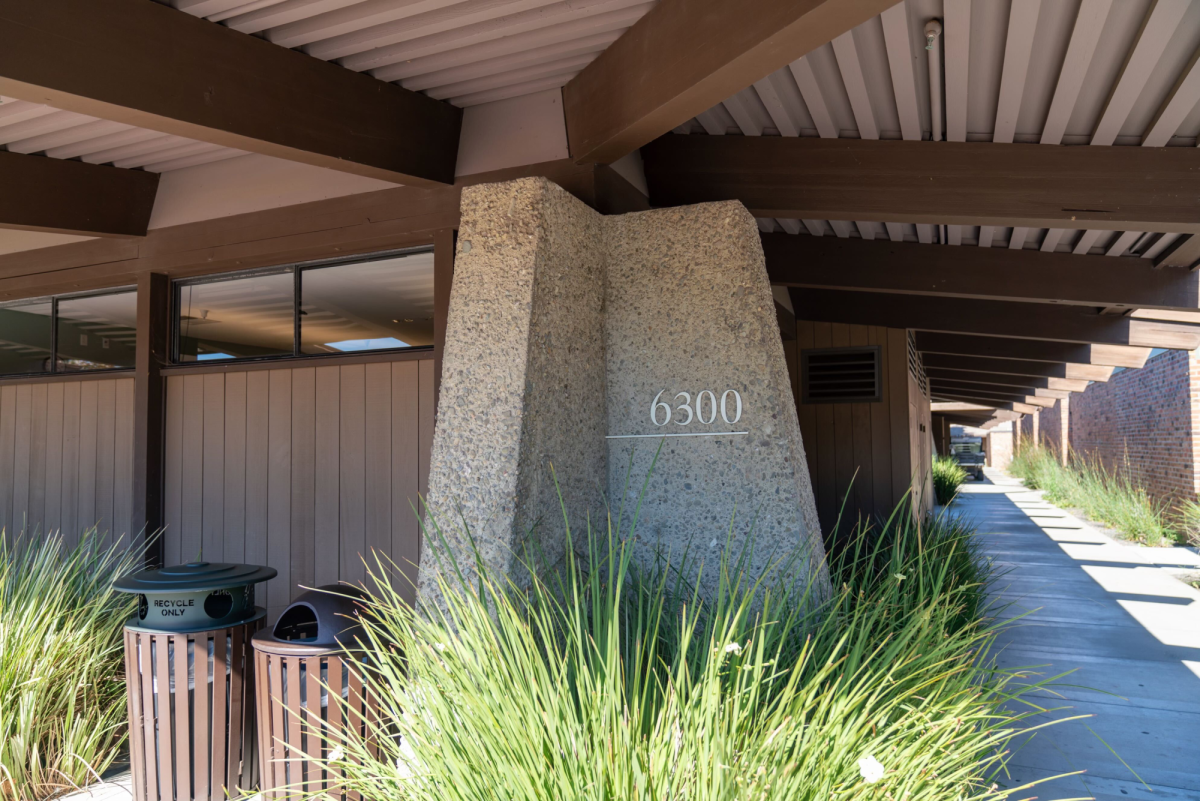Written by Jennifer Gao and Joshua Yang
The lack of student participation in the California Assessment of Student Performance and Progress (CAASPP) standardized test in previous years prompted the administration to offer incentives to students who chose to take the CAASPP test this year from March 26 through March 28. A 95 percent CAASPP participation rate is required by the state for the school to receive federal funding, but parents are given the option to opt their students out of the test. As a result of this policy, Gunn had a 23 percent participation rate in 2017 and a 46 percent rate in 2016.
According to Assistant Principal Jack Ballard, the administration reached out to the Junior Class Council to brainstorm incentives. On Wednesday, students who took all four tests were entered into a raffle for five senior parking passes, two prom tickets and three yearbooks from the Student Executive Council. Students were also treated to a barbecue and celebration party.
The prizes being offered were advertised in an email sent out to all junior students, and for many it was a definite motivation to take the test. Junior Michelle Fang believes the incentives played a role in her decision. “The incentives are a big pro for why I’m taking the test,” she said.
Junior Chanmi Shin was also convinced. “I’m taking the CAASPP because I heard you can get a lot of good things from it,” she said. “The items that they’re offering are pretty expensive, and I know that parking passes are really hard to get because the spots fill up really fast.”
According to Principal Kathie Laurence, there are many benefits to taking the CAASPP. “We have many students qualify for [the state seal of biliteracy] if they take the English Language Arts part of the CAASPP because you have to show that you’re literate in two languages, and one of them is English,” she said. “There’s also something called the Golden State Seal of Merit diploma, and that is when you demonstrate mastery of high school curriculum in at least six subject areas on qualifying exams, of which CAASPP is part of.”
The CAASPP also offers more college opportunities for students. “California State Universities (CSUs) are using CAASPP results to determine college readiness, and so based on the results, you’re considered ‘college ready,’ ‘conditionally college ready’ or ‘not ready,’” Laurence said.
Readiness results could also act as a guide for students applying to CSUs or community colleges. “If you apply to a CSU or a California community college and if you’re ‘ready,’ you’re completely exempt from placement tests,” Ballard said. “If you are ‘conditionally ready’ [and] you take some of the right classes your senior year, which most of our students do, you’ll be marked as ‘ready.’”
Aside from helping students, CAASPP results can assist teachers in gauging their students’ strengths and weaknesses. “If I were back in a classroom right now, I would be very interested in my students’ CAASPP scores and particularly how they performed in certain areas,” Assistant Principal Pier Angeli La Place said. “All of our teachers can [look at students’ CAASPP scores], and many of our teachers have an intention to do that.”
The steps taken by the administration to encourage students to participate in the CAASPP stem from the low student involvement in past years. “We’re one of very, very few [schools] in the whole state of high-performing districts that don’t have a 95 percent participation rate,” Laurence said. “Everybody around us has that 95 percent participation rate.” Gunn’s low participation rate has even received coverage from education news website EdSource. La Place described the situation as “abysmal.”
Students, however, are still compelled by a variety of reasons to opt out of the testing. “I have two tests on the Thursday after CAASPP testing, so I have to study, and I won’t have time if I take the CAASPP test,” junior Jan Cas said.
While Shin will be taking the test, she empathized with Cas’s viewpoint. “[The CAASPP] definitely changes my normal schedule because teachers are assigning more homework as they can’t spread the work out,” she said. “It increases the amount of stuff I have to do, which makes me more stressed because I have very little time.”
Junior Katie Loughney, however, is opting out to protest. “I am opting out of the test based off all my opinions on standardized testing and the education system. From what I’ve seen, the CAASPP test is used hand-in-hand with Common Core standards, a curriculum which is pretty controversial but for the most part is considered to not to be an effective baseline for education,” she said. “The fatal flaw with this system is that it creates a culture in which intelligence is quantified.”
If schools meet a 95 percent participation rate, they can get federal Title I funding without entering program improvement, a process where the state takes over the school and sets new standards and practices. Gunn has not been receiving Title I funds at all: the funds were forgone to prevent Gunn from entering program improvement. “A couple years ago, we would have been eligible [for Title I funds], but because our participation rate was so low, if we had accepted that money, we would have immediately been put into program improvement,” Ballard said. “In other words, we have turned down money at our school’s site, and we have turned down money as a district in order not to go into program improvement.”
Additionally, Laurence believes students opting out of the CAASPP are missing out on an opportunity to give back to Gunn. “[Our CAASPP participation rate] doesn’t look very good and doesn’t reflect well on us as a community,” she said. “[Students] miss out on community service for the school; this is a way to support the Gunn community.”
Following the recent visits of the Western Association of Schools and Colleges (WASC), the lack of testing data was deemed to be an area of improvement. “[WASC] said we need [the administration] to be able to use more data to help us to make decisions about how we spend money, allocate resources, what courses we offer,” Ballard said.
A low participation rate, however, is not only an issue at Gunn. “It’s also true at Palo Alto High School, so it has become a cultural norm and that is challenging to change,” La Place said. Both La Place and Ballard believe that opting out of the CAASPP has become the status quo at Gunn, and hope to change the culture, beginning with the introduction of incentives. “On a case-by-case basis, individuals may not be inspired by [incentives, so] we’re hoping that enough will,” La Place said. “However, for me, I just really want to say incentives are not a motivator for everyone, so I really hope for a more altruistic idea of an investment in our school will start to change culture.”










